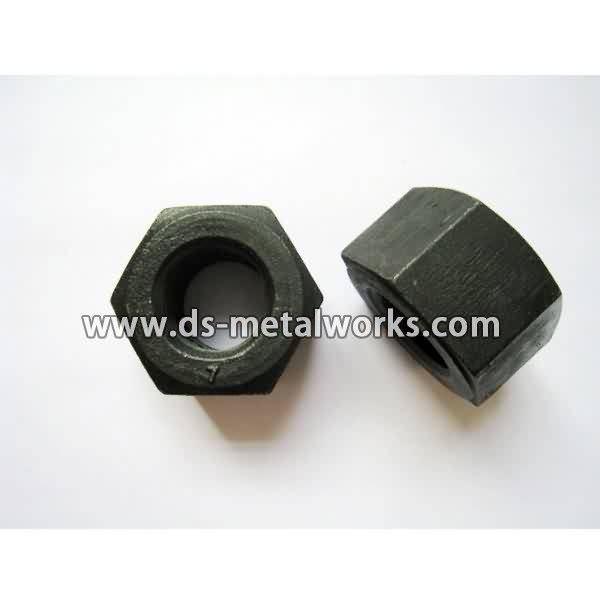Professional Design IFI-115 ASME B18.2.5M 12-Point Flange Screws Bi Hex Bolts to Ottawa Manufacturers
Short Description:
IFI-115 12 Point Flange Screws Bi Hex Bolt ASME B18.2.5M Metric 12-Point Flange Head Screws Standard: IFI-115, ASME B18.2.5M Thread Size: 1/4”-1.1/2” with various lengths Thread Size: M6-M36 with various lengths Grade: A193/A193M B7, B7M, B8, B8M, B16, SAE J429 Grade 5, 8 ASTM A320/A320M L7, L7M, L43, B8, B8M Finish: Black Oxide, Zinc Plated, Zinc Nickel Plated, Cadmium, Dacromet, etc. Packing: Bulk about 25 kgs each carton, 36 cartons each pallet Advantage: High Quality and Strict Quality C...
Product Detail
Product Tags
Professional Design IFI-115 ASME B18.2.5M 12-Point Flange Screws Bi Hex Bolts to Ottawa Manufacturers Detail:
IFI-115 12 Point Flange Screws Bi Hex Bolt
ASME B18.2.5M Metric 12-Point Flange Head Screws
Standard: IFI-115, ASME B18.2.5M
Thread Size: 1/4”-1.1/2” with various lengths
Thread Size: M6-M36 with various lengths
Grade: A193/A193M B7, B7M, B8, B8M, B16, SAE J429 Grade 5, 8 ASTM A320/A320M L7, L7M, L43, B8, B8M
Finish: Black Oxide, Zinc Plated, Zinc Nickel Plated, Cadmium, Dacromet, etc.
Packing: Bulk about 25 kgs each carton, 36 cartons each pallet
Advantage: High Quality and Strict Quality Control, Competitive Price,Timely Delivery; Technical Support, Supply Test Reports
Please feel free to contact us for more details.
Product detail pictures:


Good quality To start with,and Purchaser Supreme is our guideline to offer the top service to our customers.Presently, we've been seeking our best to be amongst the top exporters inside our industry to fulfill consumers extra need to have for Professional Design IFI-115 ASME B18.2.5M 12-Point Flange Screws Bi Hex Bolts to Ottawa Manufacturers, The product will supply to all over the world, such as: Norway, UK, Argentina, Our items are widely recognized and trusted by users and can meet continuously changing economic and social needs. We welcome new and old customers from all walks of life to contact us for future business relationships and mutual success!
Steel galvanized carriage bolts are used with tension bands and end rail clamps. These chain link carriage bolts are quality made and ready to ship. Heavy Duty Galvanized Steel Carriage Bolts & Nuts
https://chainlinkfittings.com/store/catalogsearch/result/?q=cb
Single-point threading, also colloquially called single-pointing (or just thread cutting when the context is implicit), is an operation that uses a single-point tool to produce a thread form on a cylinder or cone. The tool moves linearly while the precise rotation of the workpiece determines the lead of the thread. The process can be done to create external or internal threads (male or female). In external thread cutting, the piece can either be held in a chuck or mounted between two centers. With internal thread cutting, the piece is held in a chuck. The tool moves across the piece linearly, taking chips off the workpiece with each pass. Usually 5 to 7 light cuts create the correct depth of the thread.
The coordination of various machine elements including leadscrew, slide rest, and change gears was the technological advance that allowed the invention of the screw-cutting lathe, which was the origin of single-point threading as we know it today.
Today engine lathes and CNC lathes are the commonly used machines for single-point threading. On CNC machines, the process is quick and easy (relative to manual control) due to the machine’s ability to constantly track the relationship of the tool position and spindle position (called “spindle synchronization”). CNC software includes “canned cycles”, that is, preprogrammed subroutines, that obviate the manual programming of a single-point threading cycle. Parameters are entered (e.g., thread size, tool offset, length of thread), and the machine does the rest.
All threading could feasibly be done using a single-point tool, but because of the high speed and thus low unit cost of other methods (e.g., tapping, die threading, and thread rolling and forming), single-point threading is usually only used when other factors of the manufacturing process happen to favor it (e.g., if only a few threads need to be made,[6] if an unusual or unique thread is required, or if there is a need for very high concentricity with other part features machined during the same setup).






